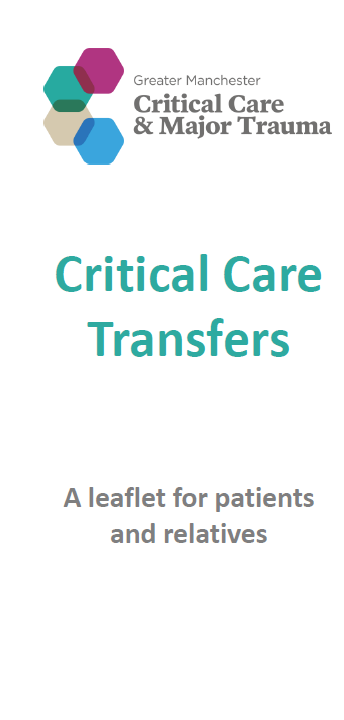About Critical Care
Adult Critical Care services includes both High Dependency (sometimes called Level 2 care) and Intensive care (Level 3 care). Critical Care is usually delivered in dedicated units within a hospital. The names can be confusing as they are often referred to as Intensive care (ICU), High Dependency (HDU) or Critical Care units but these are interchangeable names for the area of the hospital where the sickest patients are cared for.
Patients who require critical care are usually very ill and require close attention and monitoring. The very sickest of these will require advanced respiratory support or have two or more failing organ systems e.g. cardiac, respiratory, neurological that need supporting simultaneously. Most critical care units are equipped to deal with patients suffering from a wide range of different clinical conditions but some hospitals do have specialist units to deal with particular specialisms e.g. neurology, liver, oncology.
What to expect in Critical Care
It can be quite frightening coming to visit a loved one in Critical Care and it is natural to feel upset. The staff on the unit will be able to help you in understanding what all the different equipment around the bed is for. Most of the patients in Critical Care will be connected to a monitor and machines and have lines and drips of some sort. If an alarm does sound this does not always necessarily mean there is a problem and the nursing staff will deal with this and let you know what it is for, it might be something that needs doing e.g. changing one of the drug infusions in a syringe pump. Usually, there is nothing to worry about and the staff will watch the patient very closely at all times.
For the first few days after admission to Critical Care many patients are kept asleep, ‘sedated’ with a mixture of sleep inducing and pain killing medications. This makes the life saving treatments, that are necessary in Critical Care, much more bearable for the patient, as well as allowing them to rest. Most patients do not usually remember this time although sedated patients may be able hear you even if they do not respond. The staff will talk to unconscious patients telling them what’s happening and it’s important that you do the same.
You might be asked to leave the bed side on occasions, this is usually because there are necessary medical & nursing procedures that need to be done and these could upset you.
As patients start to get better, the sedatives that they are on to keep them tolerant of all the equipment is reduced to allow patients to become a little bit more aware of their surroundings. This can be a frightening time for patients as they will not know what has happened to them and the after effects of the sedatives can take a while to come out of the patient’s system. Support from families and friends can be of great help at this time.
All Critical Care patients are different and some will get better much quicker than others who may need the support from the ventilator ‘breathing machine’ for a little longer. This slower recovery is often called ‘weaning’ and although the patient is getting better it can often be a slow process. Support from families at this time can be hugely beneficial but it is important to remember that the patient may tire easily and become frustrated at their lack of progress and inability to communicate their concerns or feelings.
Visiting
Visiting hours are usually very flexible, but there may be times when visiting isn’t advised but the staff will normally let you know when this is. The number of people allowed around the person’s bed at any one time may also be limited to avoid overwhelming the patient. Sick patients need rest to aid their recovery so it is generally advised that visitors are kept to close family and friends.
To reduce the risk of spreading infection, you will be asked to clean your hands when entering and leaving the unit and you may not be able to bring in certain things such as flowers. Please avoid visiting if you are ill yourself.
Staff will be on hand to help you in the first few days as seeing your family member in critical care for the first time can be upsetting. They may be drowsy and seem confused and they may also appear slightly swollen or have injuries such as bruises or wounds. They will usually have equipment attached to them, this is to help the staff monitor the patient’s vital signs and give medication to help them get better. There will be unfamiliar sounds and other noises so ask staff to explain what these are if you would like to know more
It might seems strange, particularly if your family member is sedated but it is important to talk to them and hold their hand if you want to. The reassurance of a familiar voice is usually comforting to patients.
